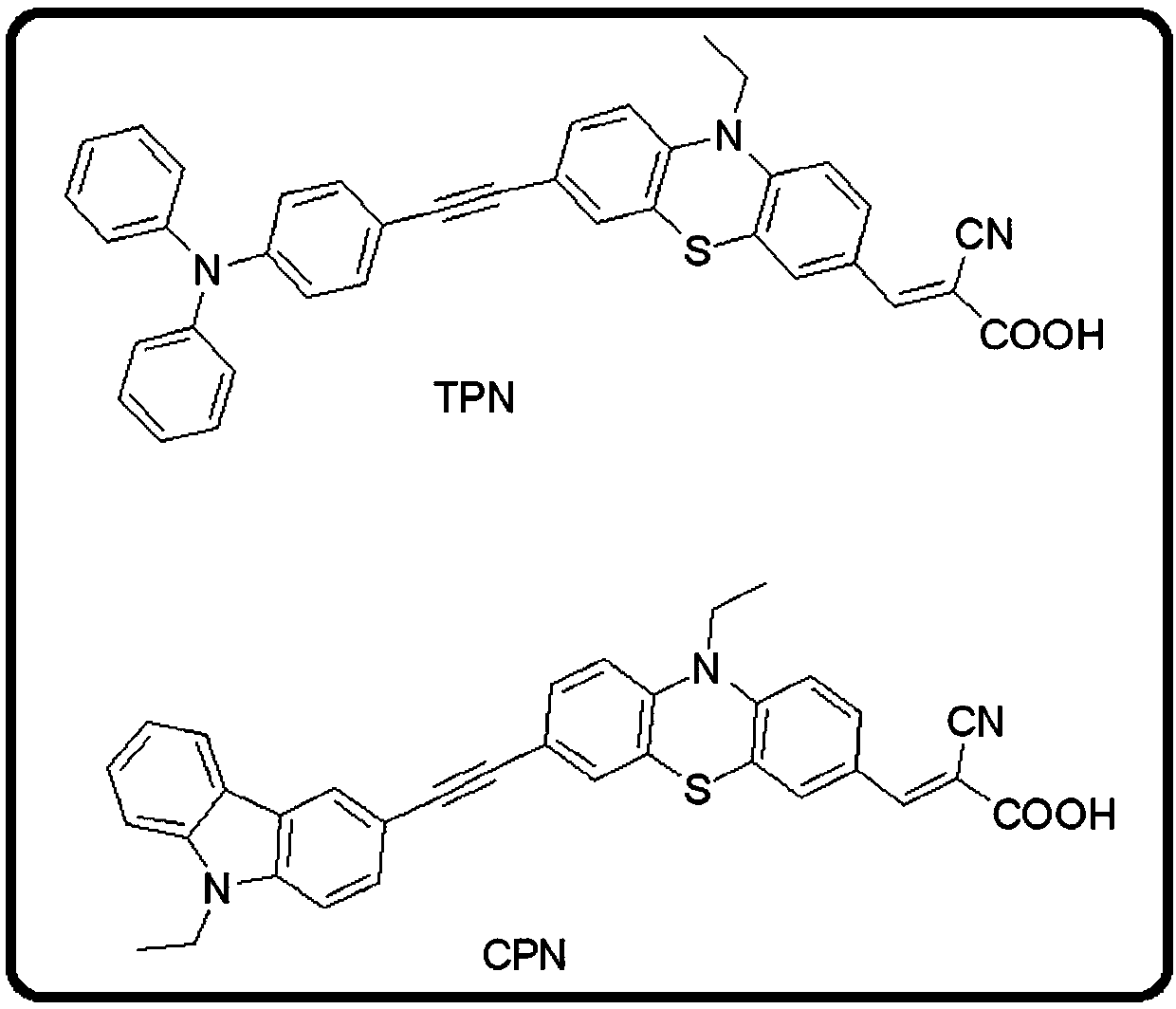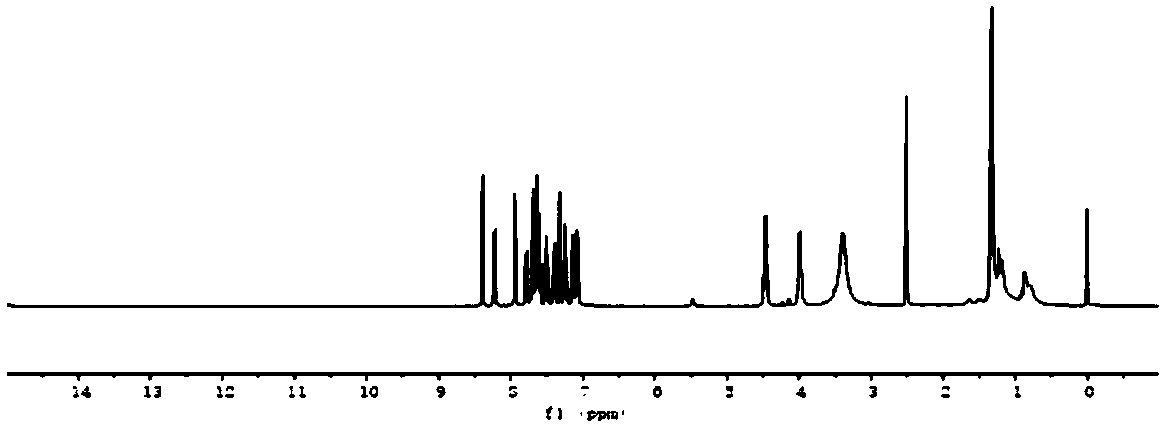A class of double electron-donating aromatic amine photosensitizer and its application in visible LED light curing
An electron-donating and aromatic amine technology, applied in the field of photofunctional organic molecules, can solve the problems of poor sensitivity enhancement, low photocuring efficiency, and long photocuring time, and achieve long photosensitive wavelength band, strong light absorption ability, and low cost. cheap effect
- Summary
- Abstract
- Description
- Claims
- Application Information
AI Technical Summary
Problems solved by technology
Method used
Image
Examples
Embodiment 1
[0035] Synthesis of Sensitizer TPN
[0036] The synthesis process is shown in the following formula:
[0037]
[0038] Add N-ethyl-6-bromophenothiazine-3-aldehyde (0.2409g, 0.8mmol), Pd(PPh 3 ) 2 Cl 2 (8.5mg, 0.012mmol), CuI (7.6mg, 0.04mmol), triphenylphosphine (10.5mg, 0.04mmol), TEA 10ml and DMF 40ml, under the protection of nitrogen, will dissolve triphenylamine acetylene (0.2574g, 0.96mmol ) DMF 20ml was added dropwise to the system, and heated in an oil bath at 85°C until N-ethyl-6-bromophenothiazine-3-aldehyde was completely reacted. After the reaction system was cooled, it was poured into water, filtered, and dried in the air. Purified by column chromatography (PE:DCM=4:1), an orange-yellow solid was obtained. Under nitrogen protection, orange solid (0.2611g, 0.5mmol), cyanoacetic acid (0.2102g, 2.5mmol), 0.5ml of piperidine and 20ml of chloroform were sequentially added to a 100ml one-necked bottle. Reflux until the reaction of the raw material is complete, co...
Embodiment 2
[0041] Synthesis of Sensitizer CPN
[0042] The synthesis process is shown in the following formula:
[0043]
[0044] Add N-ethyl-6-bromophenothiazine-3-aldehyde (0.2409g, 0.8mmol), Pd(PPh 3 ) 2 Cl 2 (8.5mg, 0.012mmol), CuI (7.6mg, 0.04mmol), triphenylphosphine (10.5mg, 0.04mmol), TEA 10ml and DMF 40ml, under the protection of nitrogen, will dissolve N-ethylcarbazole alkyne (0.2103 g, 0.96mmol) of DMF 20ml was added dropwise to the system, heated in an oil bath at 85°C until the reaction of N-ethyl-6-bromophenothiazine-3-aldehyde was complete, the reaction system was cooled, poured into water, filtered, and dried in the air . Purified by column chromatography (PE:DCM=4:1), an orange-yellow solid was obtained. Under the protection of nitrogen, orange solid (0.2361g, 0.5mmol), cyanoacetic acid (0.2102g, 2.5mmol), 0.5ml of piperidine and 20ml of chloroform were sequentially added to a 100ml one-necked bottle. Reflux until the reaction of the raw material is complete, pr...
Embodiment 3
[0047] The proportion of each component of a visible light initiating system that initiates free radical curing:
[0048] Photosensitizer TPN: 0.2wt%;
[0049] Free radical photoinitiator: 2wt%;
[0050] Additives: 0.2 wt%.
[0051] Prepare the visible light triggering system according to the above-mentioned ratio, and add the visible light triggering system to the free radical polymerizing monomer: TPGDA based on the weight of the free radical polymerizing monomer as 100%, and mix thoroughly to obtain a transparent and clear photocuring reaction solution. Add the prepared light-curing system into a rubber ring mold with a thickness of 1.8mm and a diameter of 1.5mm, fix it with two clean glass pieces, and irradiate it with 455nm and 532nm laser diodes respectively to ensure that the sample and the excitation light source are consistent. The distance is 15cm. In order to ensure the credibility of the experimental results, three NIR tests were performed on each photocuring sy...
PUM
 Login to View More
Login to View More Abstract
Description
Claims
Application Information
 Login to View More
Login to View More - Generate Ideas
- Intellectual Property
- Life Sciences
- Materials
- Tech Scout
- Unparalleled Data Quality
- Higher Quality Content
- 60% Fewer Hallucinations
Browse by: Latest US Patents, China's latest patents, Technical Efficacy Thesaurus, Application Domain, Technology Topic, Popular Technical Reports.
© 2025 PatSnap. All rights reserved.Legal|Privacy policy|Modern Slavery Act Transparency Statement|Sitemap|About US| Contact US: help@patsnap.com



